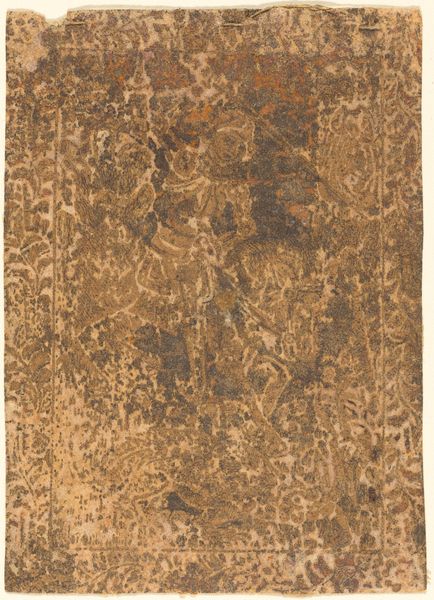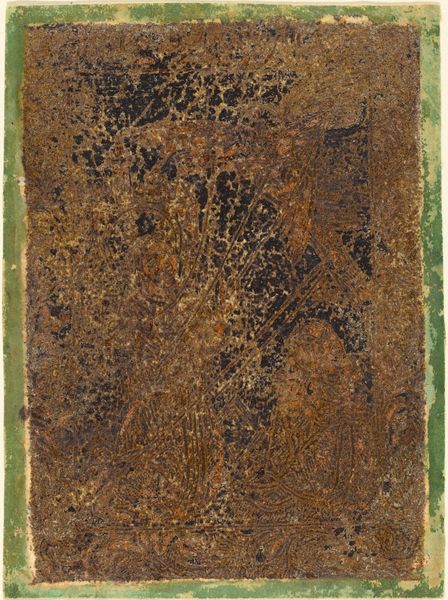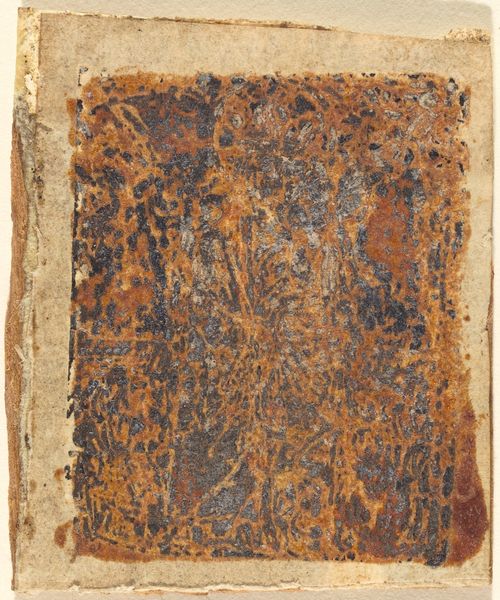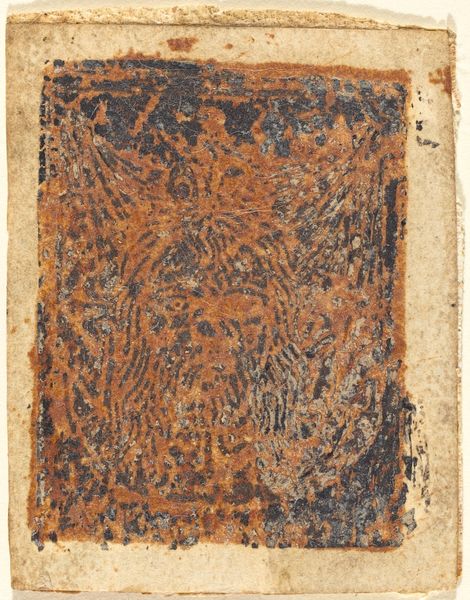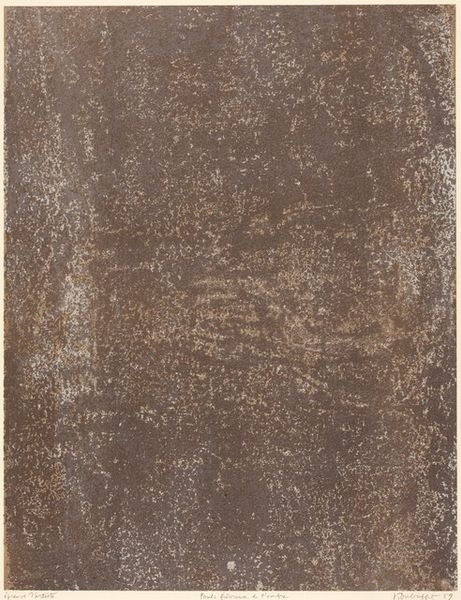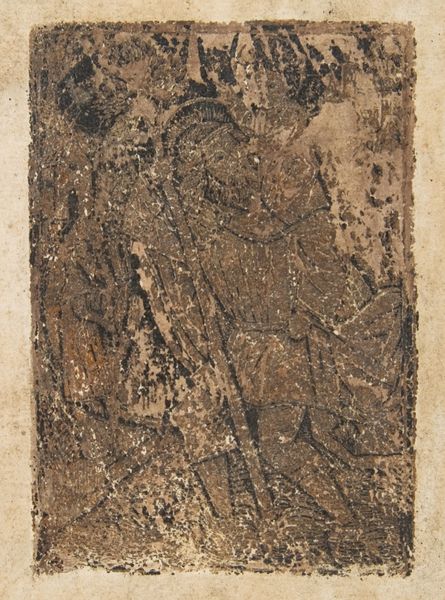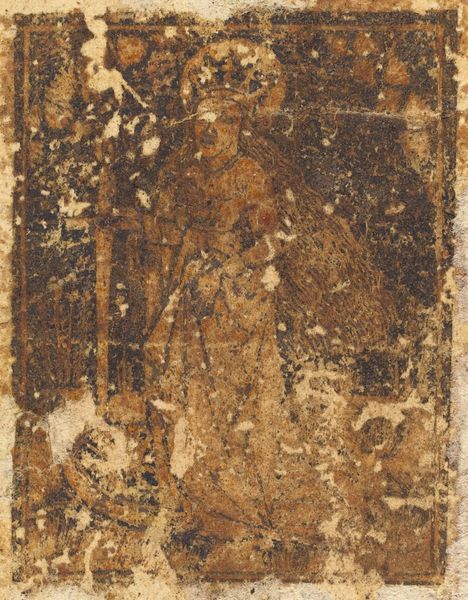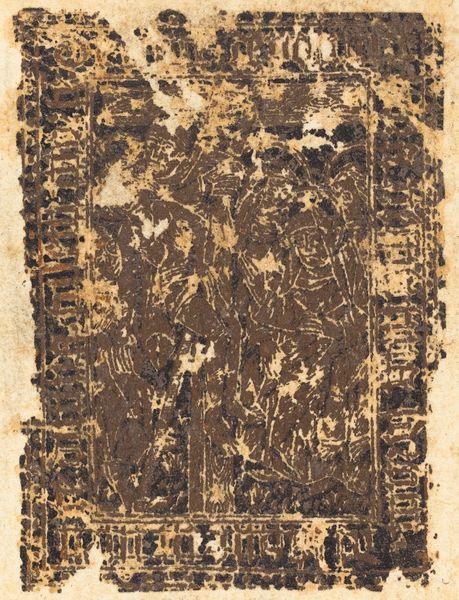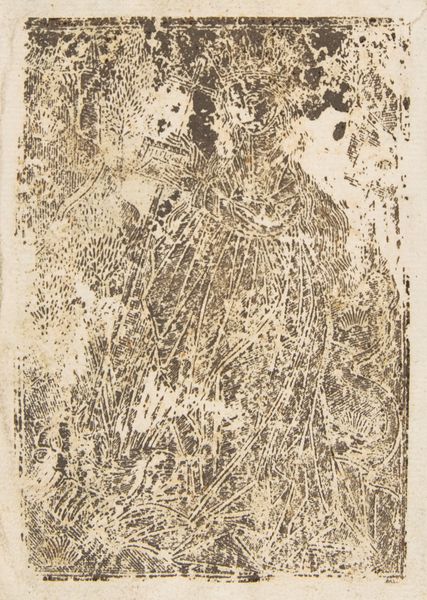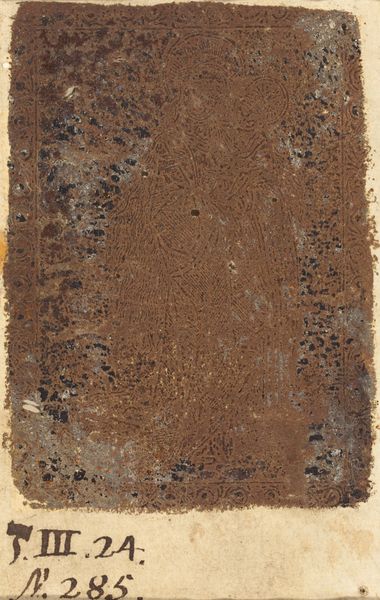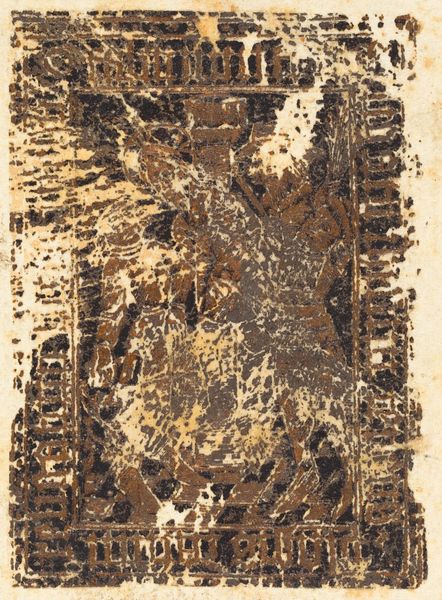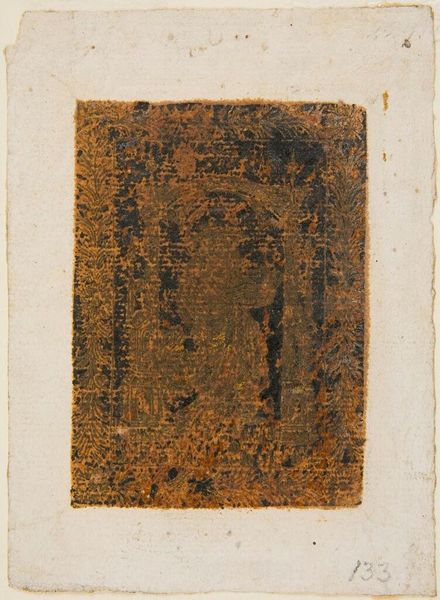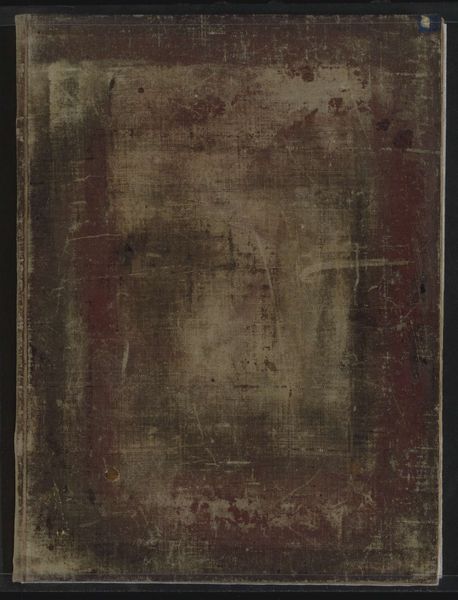
print, paper, woodcut
#
medieval
# print
#
figuration
#
paper
#
woodcut
Copyright: National Gallery of Art: CC0 1.0
Editor: We’re looking at an early woodcut print on paper titled “Saint John the Baptist,” dating from around 1470. The figure is so worn, it's almost an apparition. What strikes me is how this piece demonstrates a connection to the visual culture of its time, even in this rudimentary medium. How would you interpret the work from a historical viewpoint? Curator: Indeed, the visible wear tells a story of devotional use; prints like these were made for widespread, accessible piety. Think of this not just as art, but as a mass-produced religious object. Its creation and distribution reflect the changing social and religious landscape of the late medieval period, prior to the rise of other, competitive print media like engravings. Do you notice the framing, or the hints of botanical decoration around the central figure? Editor: Now that you mention it, I do. It almost looks like vines. I hadn't noticed before, as I was too focused on the figure. Does the border relate to the use or consumption of the print? Curator: Exactly. The border imitates a framed painting and domesticates what was otherwise a pretty rugged religious icon. This detail also tells us about the economic and political environment where this print circulated. Framing this holy person makes the object a commodity of sorts. Are you struck by this interpretation? Editor: Definitely. It makes me think about the commercialization of religion in general. So, something like this print served not only a spiritual purpose, but also played a part in a larger economic system. Thank you. Curator: And for me, seeing your fresh take reminds us that even the humblest artwork can unlock critical ideas about its world.
Comments
No comments
Be the first to comment and join the conversation on the ultimate creative platform.
